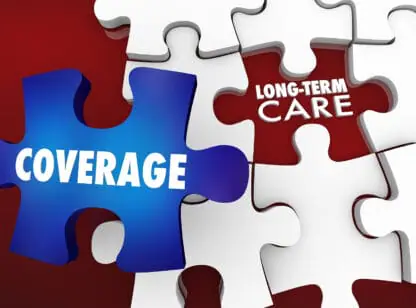Stem cells hold enormous promise as a medical therapy with multiple benefits. In an FDA consumer press release entitled Adult Stem Cell Research Shows Promise, the FDA author wrote that stem cell research could ultimately be key to the advancement of personalized medicine, the practice in which medical treatment is tailored to the needs of an individual patient. “It is not science fiction,” says Steven R. Bauer, PhD, Chief of the Cellular and Tissue Therapy Branch in the FDA. “For me regenerative medicine is the most exciting part of what we regulate in our office.”
There is no clear proof yet, but many patients swear by the benefits of stem cells in reducing joint pain and low back pain. However, some doctors and chiropractors may have taken it too far. Just recently in The New York Times (April 4, 2019) an article entitled FDA Issues New Warnings to Rogue Stem Cell Clinics, the newspaper described recent efforts by the FDA to warn some stem cells clinics to stop selling unproven treatments that could harm patients.
There is an approved way – and many unapproved ways – to provide stem cells. Just last year, the FDA published Regulatory Considerations for Human Cells Tissues and Cellular and Tissue Products: Minimal Manipulation and Homologous Use (corrected version issued December 2017). In this notice, the FDA author wrote that without a complete research agreement with the FDA (an IND), the FDA specifically condemns three practices:
- Allogenic cells, i.e. using cells from another person, as opposed to autologous
use, which refers to using stem cells from the same person. If you get stem cells from your own body, you don’t risk an infection. - Any treatment to one’s stem cells other than minimal manipulation. They specifically mention their disapproval of adding substances to stem cell preparations. To inject stem cells that have been harvested from fat into a joint, practitioners add enzymes which is in violation of FDA guidance. Therefore, one should not use stem cells from fat and inject them into joints.
- Non-homologous use: in their description of homologous use FDA describes how one can harvest fat cells for use only where fat cells go, in other words “like to like,” and they specifically give the example that it is approved for a doctor to put stem cells from fat into the face or hands. Then the FDA goes on to specifically warn against using fat cells for the joints. In section 19-6 (B), they provide an example of failure to meet criteria for homologous use and specifically describe using “adipose (fat) tissue…to treat musculoskeletal condition such as arthritis or tendonitis.” According to the FDA, this is “not considered homologous use because regenerating or promoting a regeneration of cartilage or tendon is not a basic function of adipose tissue.”
However, stem cells can be harvested from bone marrow, which is rich in pluripotent cells (cells that can have many functions). Mayo Clinic has ongoing research using bone marrow aspirate to harvest stem cells and inject them into joints – especially knees. A 2018 edition of Discovery’s Edge, Mayo Clinic’s research magazine, describes a man with chronic knee pain that was markedly improved after an injection of stem cells from BMCC (bone marrow cell concentration). The Cleveland Clinic is now collaborating with Dr. David Karli, a partner at the Steadman Clinic in Vail, Colorado, to reduce pain and improve activity in patients by using BMCC. The Steadman Clinic has been using this method for thousands of patients, and now nearly 50 percent of athletes receiving shoulder or knee surgery request injection of stem cells in addition to their operations.
What to look for in a stem cell clinic:
- Source. Are they harvesting stem cells BMCC (bone marrow) or from fat?
- Comfort. Do they offer conscious sedation where you are “out” for a few minutes so that it is virtually pain-free? Remember when doctors did sigmoidoscopies and just told you to hold still? Now you can get a complete colonoscopy without any discomfort due to conscious sedation. Some clinics use an anesthesiologist to make the brief procedure of stem cell harvesting virtually pain-free, and without all the bruising expected from harvesting stem cells from fat.
- CT-guided injection with a photograph of needle placement can assure the doctor and the patient that the needle was placed exactly, within 1 mm, of where they want the stem cells to go. Blind injection or ultrasound is not in the same league.
- Counting the cells. Some doctors are not counting the cells at all and it is not clear what exactly is being injected, whereas others use expensive cell-counting machines that can provide an exact number of cells, monocytes, platelets, etc. These results can be shared with other medical scientists.
- Cost. Whereas many treatments may cost $10,000 or more, one can find clinics that provide conscious sedation, use the cell counter, use stem cells from BMCC, and use CT-guided injections, all for less than $7000.
In spite of FDA concerns about some health care providers, many medical centers are following FDA guidelines and providing BMCC stem cell therapies for osteoarthritis in the knees as well as for focal CT-guided treatments to low back areas. Preliminary evidence suggests that proceeding in this manner is safe and highly effective for many patients.
Editor’s Note: Dr. Cosgrove’s article discusses current FDA guidelines; however, stem cell therapy is an emerging field and there is ongoing discussion on the efficacy of fat- derived cells with clinical trials underway.
Dr. Cosgrove is an integrative medical doctor with the WellMax Center For Preventive Medicine in Indian Wells and can be reached at (760) 777.7698.








































Comments (0)